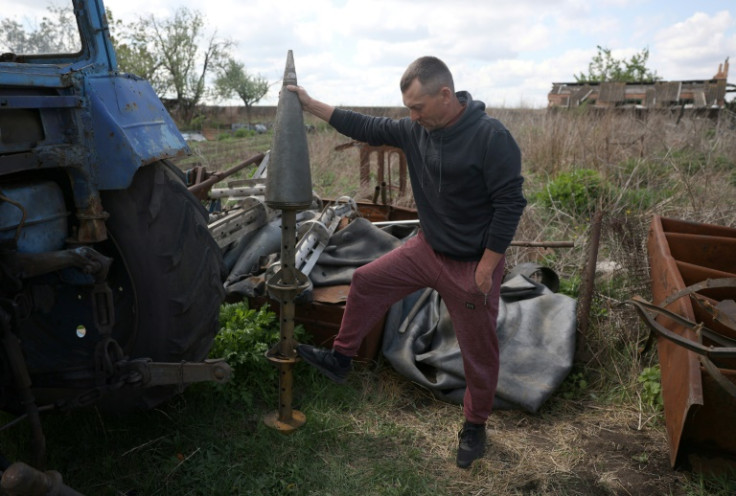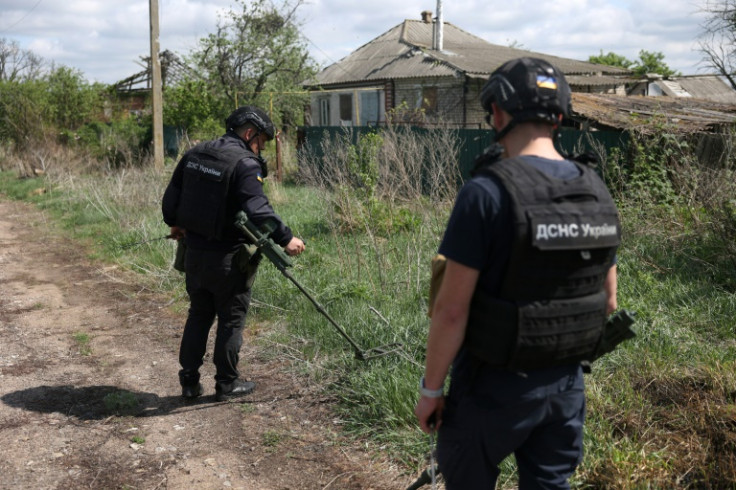Ukrainian Village Battles Mines Year After Russia Forced Out

Every metre that farmer Igor Kniazev ploughs in an east Ukrainian village holds the danger of mines, booby-traps and unexploded shells -- the remains of a nearly three-month Russian occupation that ended over a year ago.
The deadly risks are among the traces of fighting left nearly everywhere in Dovgenke, a village which had a population of a few hundred people before the war.
Homes and sheds are torn apart, burnt cars rust on roadsides and smashed gates are riddled with shell fragments since the Russian occupation from June 11 to September 10, 2022.
But the least visible remains of war are among the longest lasting and perhaps most dangerous in this village and across Ukraine.
"Many soldiers and civilians have died from walking on the mines here. On the anti-personnel mines, anti-tank mines. There are so many that we can't even count them," 44-year-old Kniazev said.
More than two years after the war began, Ukraine, a vast country situated at the gateway to the European Union, has become one of the most-mined countries in the world.
One-third of Ukraine's territory, according to the United Nations, may be affected, which also is an obstacle for its massive agriculture sector.
The trailer behind Kniazev's tractor was loaded with the remains of shells and rockets, thousands of which fall on Ukraine every week.
Plot after plot, while ploughing the land, Kniazev systematically checked every metre.
He noticed marks on the ground, signs of a crane and a truck that passed recently to dismantle the gun of an abandoned tank.
"It's surprising that the vehicles did not set off any explosions, there are too many mines and explosions here every day," he said.
Another local, Natalia Demchenko, showed a segment of a rocket sunk two to three metres (6.5-10 feet) into the ground that deminers told her could only be removed with a tractor.
Deminers also burned the fields in order to reveal where the mines were so they could be spotted and destroyed more easily.
"The sappers work here every day. Sometimes, they tell us not to be afraid, that they'll blow them up," Demchenko, 52, said.
Since the village was retaken from Russian forces in September 2022, engineers have returned to clear mines but also to restore utilities "so that people can have electricity, light and continue to live in peace on this land," said 24-year-old deminer Oleksiy.
Anti-personnel mines continue to kill and maim long after conflicts end.
Buried or concealed in the ground, they explode when a person makes contact with them.
As Russian and Ukrainian militaries use this type of weaponry and fire thousands of shells every day, including cluster bombs, Ukraine's fields near the frontline have become death traps.
According to a Human Rights Watch report, 11 of the 27 regions in Ukraine are riddled with mines.
In August 2023, Oleksiy Reznikov, the then minister of defence, said that Ukraine was "the most heavily mined country in the world".

© Copyright AFP 2024. All rights reserved.





















